Spanish-Language Music at Jazz Fest 2025
Every year since 1996, the New Orleans Jazz & Heritage Festival has filled its Cultural Exchange Pavilion with musicians connected to a country that shares musical and cultural ties with our fair city. This year, the featured country is Mexico and our lineup will not disappoint.
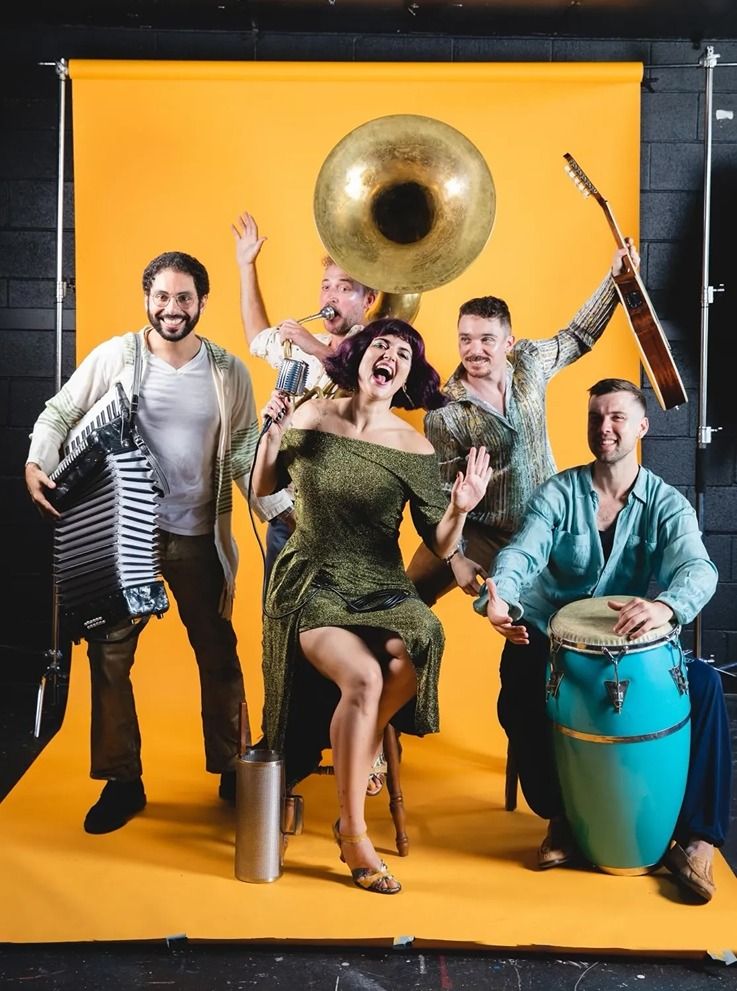
As the headliner, we booked one of the most famous Mexican-born American musicians of all time, 10x Grammy-award winning, Rock and Roll Hall of Fame inductee, guitar legend Santana. Banda MS, who are huge in the Latin world and average a million plus dollar booking fee, are bound to put on a heck of a show, as well. Grammy winner and Tiny Desk Concerts' performer Lila Downs has a stunning voice that she uses to sing in several indigenous Mesoamerican languages such as Mixtec, Zapotec, Mayan, Nahuatl, and Purépecha.
Jazz Fest is stacking the stage with bands from all around Mexico. Enjoy traditional marimba with Marimba Nandayapa from Chiapas, Son Jarocho with Son de Madera from Veracruz, modernized Mixtec village music with Pasatono Orquesta from Oaxaca, mariachi from Guadalajara with Son del Coamil, Guerrero and the Afro-Mexican rhythms with Las Hermanas García and Mixanteña de Santa Cecilia from Mexico's Pacific coast, J M y Sus Norteños from Veracruz, El Conjunto Nueva Ola from Mexico City, Mexican electronica with the Mexican Institute of Sound, and the signature cumbia punk sound of returning band Son Rompe Pera.
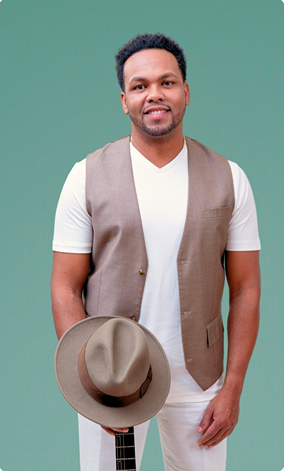
U.S.-based Spanish language bands include La Santa Cecilia and Mariachi Los Camperos from Los Angeles; Los Texmaniacs, La Insistencia Norteña, and "El Dusty" from Texas; and, though he doesn't often sing in Spanish, you can't miss Tex-Mex punk rock veteran Alejandro Escovedo.
Papo y Son Mandao and the wildly percussive Afro-Cuban jazz piano group Alfredo Rodriguez Trio both hail from Cuba. Quique Escamilla brings you Mexican music by way of Canada. Grupo Fantasma is a nine-piece, Grammy award-winning Latin funk Cumbia band from Austin, Texas, and La Insistencia Norteña, also from Texas, will be joining local harpist Patrice Fisher & Arpa in an exciting collaborative performance. To add some additional excitement, Matlachines Los Venados from Aguascalientes and Calenda from Oaxaca will be parading through the grounds on both festival weekends, leading a dance line to the cultural tent.
Even when Jazz Fest rolls out of town, you'll still be able to catch all of these wonderful Spanish-singing bands from around the world who have made their homes in New Orleans.
Local Spanish-Language Acts
Mariachi en Nueva Orleans Los Viajeros [Thursday, April 24 | Expedia Cultural Exchange Pavillion Celebrates Mexico, 11:30 a.m.] has a classic mariachi sound and is available for hire and pop up wherever they're needed: at dinners, parties, weddings, quinceañeras, and, occasionally, the New Orleans Jazz & Heritage Festival.
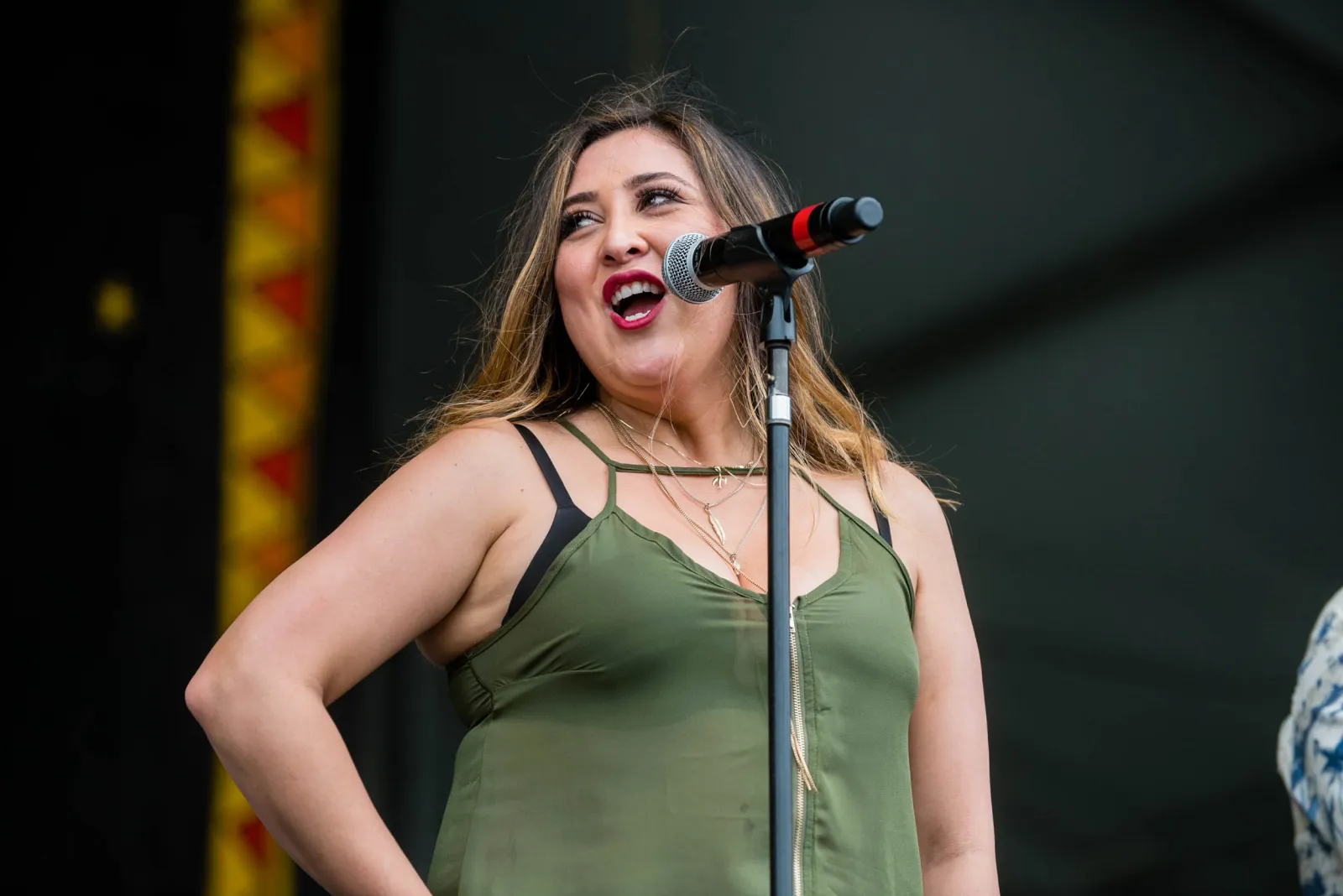
Rumba Buena [Saturday, April 26 | Congo Square Stage, 12:15 p.m.], fronted by Johnny Marcia, is no newbie to Jazz Fest. Born in New Orleans to Honduran parents, Marcia has been playing with his father's Latin band, Los Sagitarios, since the age of 16. In the early aughts, once Marcia became the new leader, he renamed the band Rumba Buena and added several genres into the band's repertoire, now known for performing salsa, merengue, and bachata-influenced beats.
Los Güiros [Saturday, April 26 | Jazz & Heritage Stage, 12:25 p.m.] is a female-fronted, psychedelic cumbia band combines traditional Colombian folkloric rhythms with Peruvian chicha and modern electronic elements, as well as mixing up their arrangements with organ, electric guitar, and sousaphone.
Treces del Sur: "New Orleans Latin Music Band" [Sunday, April 27 | Jazz & Heritage Stage, 11:20 a.m.] is made up of musicians from New Orleans, Puerto Rico, Honduras, Mexico, Dominican Republic, Mississippi, and everywhere else. They've played major events including French Quarter Fest, Jazz Fests of previous years, the Audubon Zoo's Latin Celebration, and the Gretna Heritage Festival, but you can also catch them at restaurants and clubs. They just love to play.
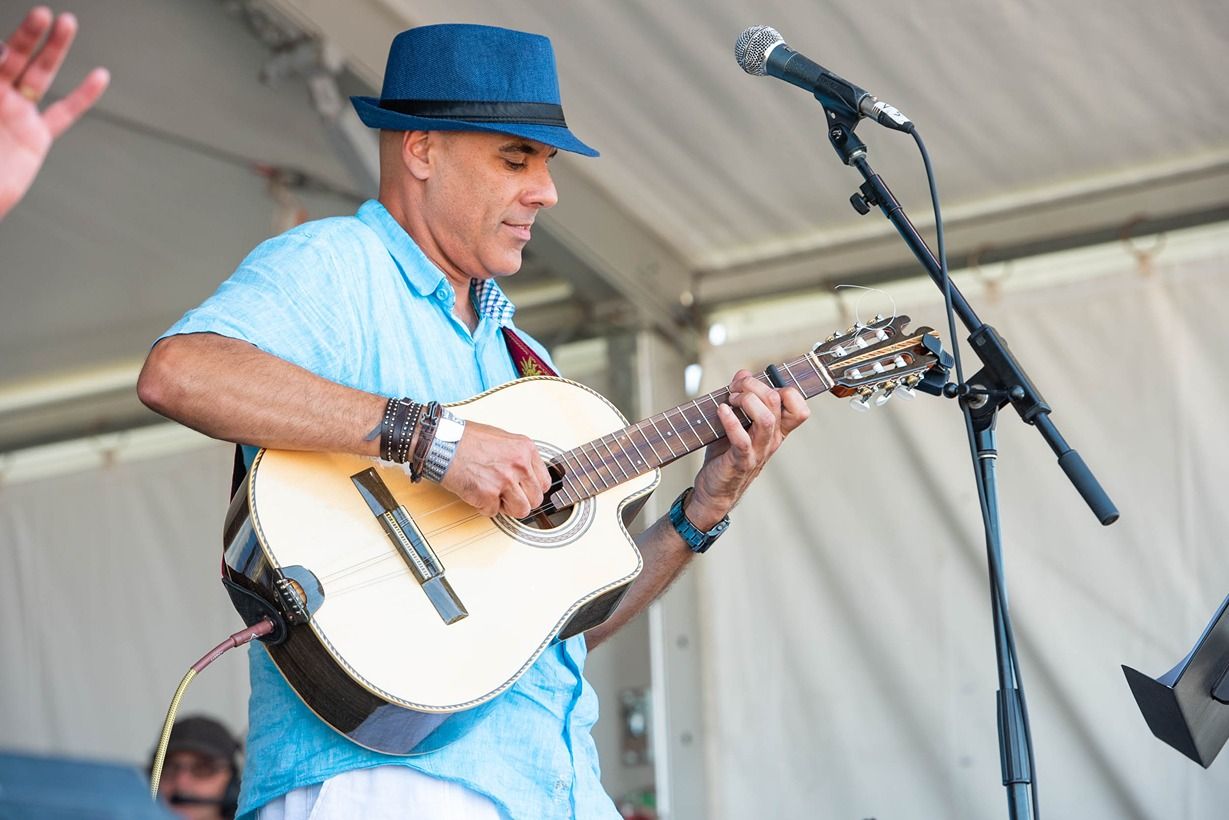
Javier Olondo [Sunday, April 27 | Jazz & Heritage Stage, 1:40 p.m.], while local, can be seen performing throughout Europe and both the Americas. The Cuban guitarist received his arts degree from the Mozarteum University in Salzburg, Austria, and has brought his global influences into his sound. He is a professor of guitar at Tulane University and the artistic director of the New Orleans International Guitar Festival, as well as being the host of the popular TV show Que Pasa TV. He even has the keys to the city of Kenner and was awarded as an honorary citizen of the city of New Orleans.
Fermin Ceballos [Sunday, April 27 | Rhythmpourium, 2:20 p.m.] moved here from a small mountain town in the Dominican Republic back in 2012. He is a joy of a human and it reflects beautifully through his music. Through his tenure here, he's incorporated local sounds such as Zydeco into his repertoire, which makes for a wild mix with merengue, bachata, palos, Latin jazz, and cumbia. Ceballos sings in Spanish, English, and Portuguese, so you really never know what you'll get, but it will always be fun.
Javier Gutierrez & VIVAZ [Thursday, May 1 | Jazz & Heritage Stage, 12:20 p.m.] are not newcomers to Jazz Fest. Gutierrez hails from Bolivia and moved to New Orleans in the '80s. His guitar sound is strongly based in flamenco, Latin jazz, bossa nova, and world music. His first Jazz Fest performance dates all the way back to 1992.
Conjunto Tierra Linda [Thursday, May 1 | Jazz & Heritage Stage, 3:00 p.m.], originally from San Fransisco, specializes in Latin jazz, salsa, són-montuno, and popular Cuban sounds. Their members hail from various places around the U.S., Caribbean, and Latin America. Their strongly Afro-Caribbean rhythmic influences make them sought out for events with dance floors.
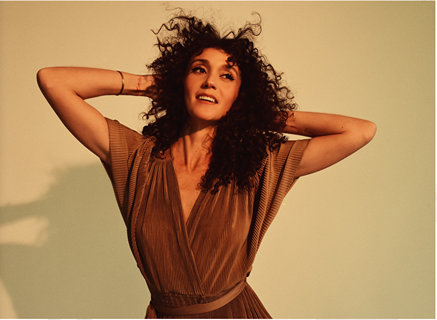
Cristina Kaminis [Sunday, May 4 | Expedia Cultural Exchange Pavillion Celebrates Mexico, 11:30 a.m.] performs jazz, ranchera llanta, blues, ballads, and songs in French and Portuguese, as well as Spanish. A regular at Bamboula's, the Mexican American singer has spent her spring in anticipation of Jazz Fest, performing in City Park's Botanical Gardens and at the Jazz and Heritage Center as part of their Chanteuse Series.
French Quarter Festival
A longtime local favorite of New Orleanians, the French Quarter Festival is ours and has been for 41 years, first debuting in 1984.
This singular festival, with
the mission of preserving and showcasing our culture, flavor, and heritage,
employs 1,700 local musicians every year in its four-day weekend duration.
Pivotal to our way of life, with its many stages and food pop-ups, the French
Quarter Festival was an organic response to the disastrous, bankruptcy-ridden
World Fair that New Orleans hosted earlier that year.
Working with the community to reinvigorate the
French Quarter and put money into the pockets of artists, the festival has
grown and grown to the point where they now build more than 20 pop-up stages,
celebrating a diversity of local genres and utilizing 1,500 volunteers to run
it smoothly. Sponsor-funded and free to the public, all these decades later, it
is the United States' biggest free music event. The festival circulates
millions of dollars into the city and includes more than 60 local restaurants.
With a clear and consistent mission, all the companies, vendors, workers, and
bands employed are local, so all of the money spent and made stays within the
community.
French Quarter Festival's Entertainment Director Greg Schatz, a musician himself who performs piano, bass, and accordion in various musical groups, joined the staff of the festival in 2008 and has been in his current position since 2019. He liked the idea of selecting performers who are still currently performing but were also a part of the inception of the festival, gracing those stages since their nascent days. The three living legends who quickly came to mind were Charmaine Neville, John Boutté, and Wanda Rouzan.
Charmaine Neville
Saturday, April 12, 3.50 P.M., NewOrleans.com Stage

Heralding from a New Orleans royal family, jazz and funk singer Charmaine Neville is the daughter of saxophonist Charles Neville, as well as the niece of Art, Aaron, and Cyril Neville. Being born into New Orleans' "First Family of Funk," Charmaine came out playing. With seven solo albums under her belt and contributions on a dozen more, Neville has left her mark all over this city. She's also played festivals and shows as far out as Rome, Madrid, Barcelona, Paris, Zurich, Berlin, Copenhagen, Auckland, São Paulo, Sasebo, and Barbados. Neville and her band have performed with superstars like the Rolling Stones, Dr. John, Bobby McFerrin, Steven Stills, Harry Connick Jr., and Linda Ronstadt. She's even been on stage at the Angola Penitentiary, where her father did an infamous stint in the 1960s for marijuana possession. She brings a deep sense of shared humanity, musicianship, and so much humor to her performances. Neville has been performing since the first days of the French Quarter Festival in the 1980s, and, just last year, she brought down the house with an epic set on the Jackson Square Park Stage, where she was joined by her son Damion "Lord Nexus" Neville. Multi-generational Neville performances are always a joy.
John Boutté
Friday, April 11, 11.15 A.M., NewOrleans.com Stage
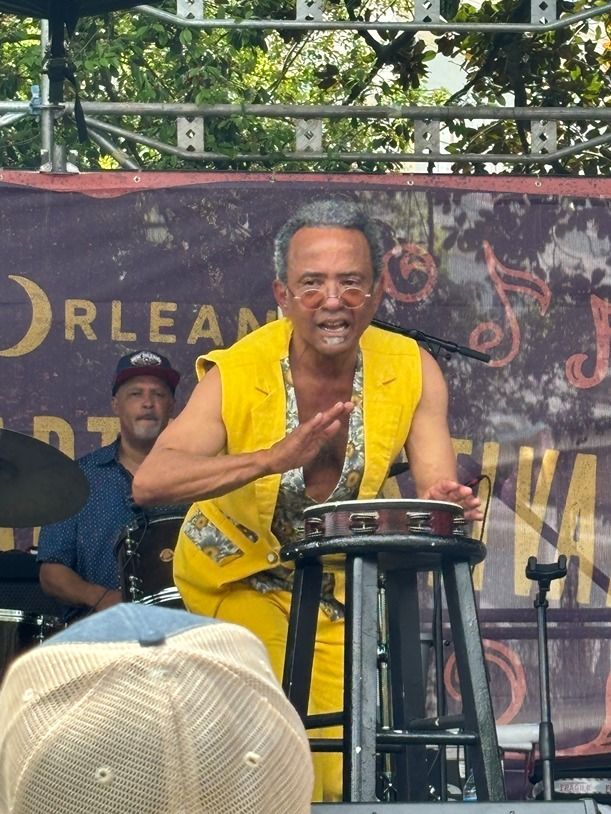
Boutté began performing at the French Quarter Festival in the 1990s and has been a staple for the past three decades; however, he has been to nearly every French Quarter Fest since its inception and has distinct memories of being in attendance at the first festival in 1984, along with his whole family, watching his older sister, gospel singer Lillian Boutté, perform up on the stage. Boutté has released 11 albums and has made guest appearances on as many. Beloved in the local scene, he's recorded with Galactic, Tom McDermott, Glen David Andrews, and Paul Sanchez, as well as Todd Rundgren, Cubanismo!, and John Scofield. Boutté is somewhat of a mascot for our city, having been on several seasons of the HBO series Treme—even writing the theme song. Boutté began singing and playing music at a young age, but got a degree from Xavier University, then enrolled in the U.S. Army, went overseas, and didn't begin his musical career, in earnest, until returning and then eventually releasing his first album in 1993. The New York Times once described him as "evok(ing) the sound of Sam Cooke," with a New Orleans bent, of course.
Wanda Rouzan
Sunday, April 13, 3.10 P.M., Tropical Isle Hand Grenade Stage
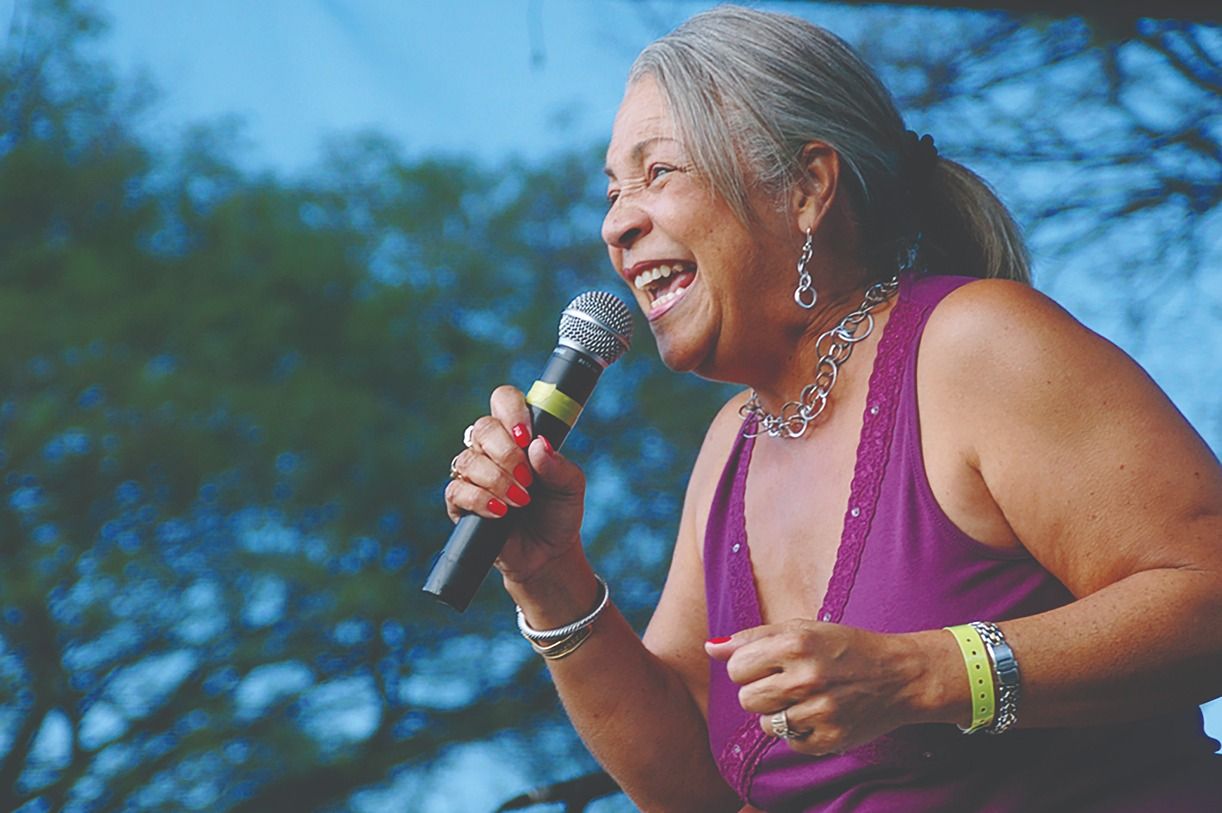
Wanda Rouzan, a.k.a. Mama Roux and "The Sweetheart of New
Orleans," has been performing since she was a teenager, originally, in a band
with her actual sisters who sang in tight harmonies called the Rouzan Sisters.
They had a big single in 1964 called "Men of War." Around that time, Rouzan
played with Lee Dorsey and Clarence "Gatemouth" Brown (there's still footage of
her from that era online). Rouzan has had a long and varied career as a regular
on a season of Treme, touring in the
musical One Mo' Time, and performing
in classical plays such as Madea and Taming of the Shrew, as well as
regularly performing with her own music. She has served on many boards and
committees including the Louisiana Philharmonic, the New Orleans Jazz &
Heritage Festival Foundation, the Black Music Hall of Fame, Xavier University,
and Xavier Prep. She is also a famous grand marshall—an unusual honor. She has
been the grand marshall for Danny Barker and Blue Lu Barker, Teddy Riley, Ernie
K-Doe, and John Brunious. Rouzan has performed since the first French Quarter
Festival, and you can catch her again, this year, on stage with her band Wanda
Rouzan and a Taste of New Orleans. Everywhere she plays, and in every genre,
she has always known how to command a crowd.
Feelin' Lucky
In honor of St Paddy's Day, we've compiled a few great Irish bands, musicians, pubs, festivals, and even a dance school to help you enjoy some of the whimsy and the culture of Ireland.
Irish music throughout New Orleans used to have many homes, pre-pandemic, but several anchors of the culture made lives elsewhere, favorite places shuttered, societies put their meetings on hiatus, and festivals struggled to find funding. While it's been a quiet period, we seem to be on the precipice of a resurgence, with three exciting bands—The Forgotten Revelers, Crescent & Clover, and Avoca—performing more frequently along the Gulf Coast, Celtic jams establishing new homes, ceílís (much like Irish fais do-dos) popping up, and cultural groups reconvening.
The best place to immerse yourself in Irish culture is the Muggivan School of Irish Dance, with classes open to students of all ages and levels of experience. In Irish music, the dancers become percussion: they tap, hum, flow, and are deeply integrated into the rhythm of the songs. Proprietor Joni Muggivan hails from Mountshannon in East County Clare, Ireland and is the president of Irish Network New Orleans. Shannon Kelly, the vice president of Irish Network New Orleans and a member of Avoca, also teaches Irish dance, tin whistle, and fiddle at Muggivan.
When it comes to places to drink like an Irishman, the Kerry Irish Pub, Markey's Bar, and Finn McCool's Irish Pub are our top three choices for grabbing a pint and hearing authentic music, as our three featured bands have performed there from time to time and Crescent & Clover has a monthly residency at the Kerry. Pepp's Pub, while not an Irish one, is set to be the new home of the weekly Celtic jam, and considers themselves to be "Dog Friendly, People Tolerant," so they will always top our list as a joyful place to hang. Silk Road Restaurant & Wine Bar has been a home of Celtic jam sessions for many, many years. For more places to drink, music or not, there's always Mick's Irish Pub, Parasol's, Holy Ground, Fahy's Irish Pub, Erin Rose, Ryan's Irish Pub, Tracey's, Boondock Saint, and Molly's on the Market. If you'd like a history lesson with your bourbon (or very solid coffee), head to St. Pat's Irish Coffeehouse, which is housed in the Irish Cultural Museum of New Orleans.
And now, moving on to why you read "All That Jazz," we present you with The Forgotten Revelers, Crescent & Clover, and Avoca.
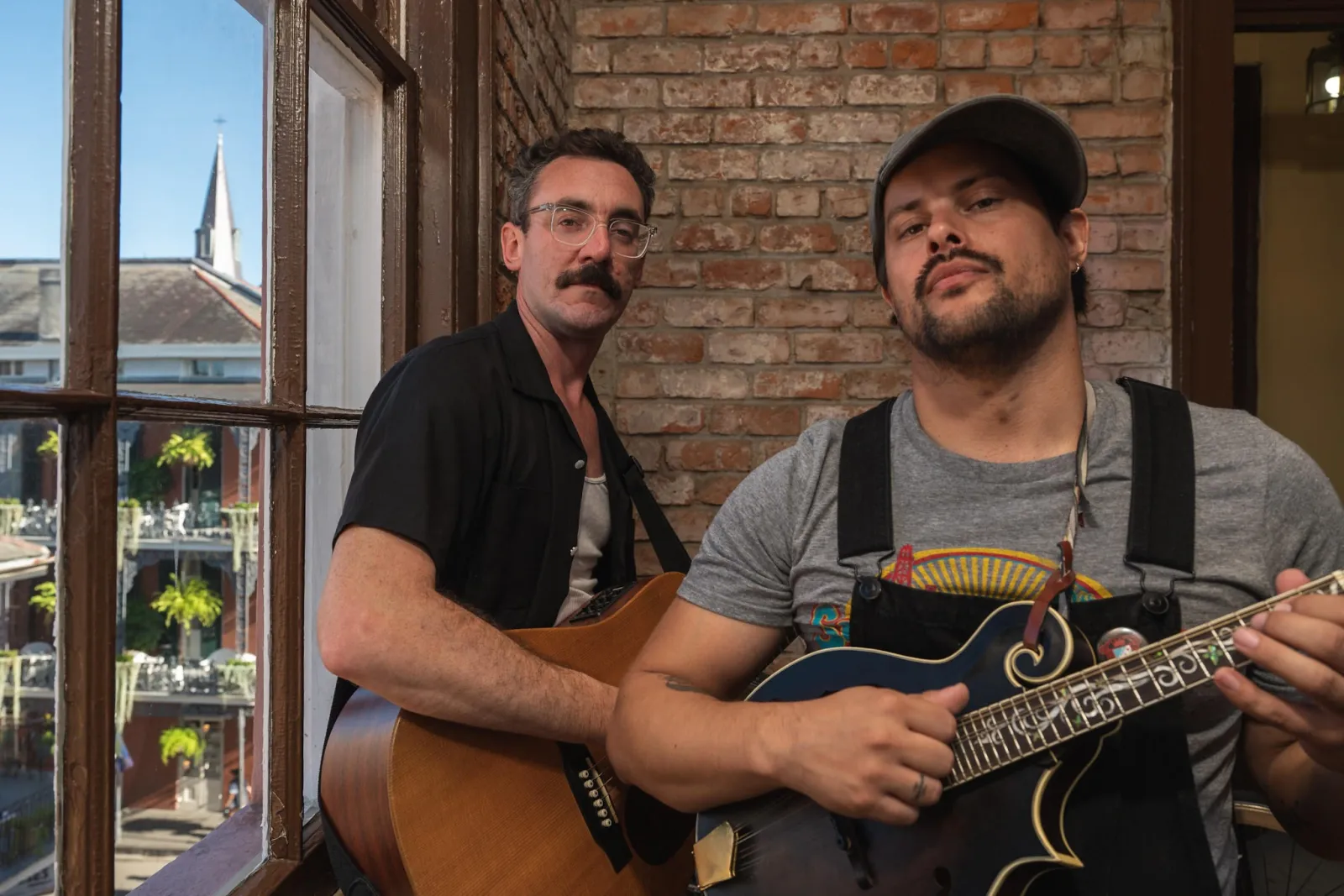
The Forgotten Revelers was founded by two musicians who know each other from the jazz world. Both Bryce Eastwood and Sam Friend play many genres and instruments. Eastwood, who often performs with the New Orleans Jazz Orchestra, the Mark Brooks Trio, the Golden Compass Trio, and Geovanne Santos, fell in love with Irish music only a few years ago, finally putting his mandolin, tin whistle, and vocal skills to use. Friend, who you can see performing with James Andrews, Swamp Donkeys, and Glenn David Andrews, also sings vocals and plays guitar in the band. He discovered a whole lineage of family in Ireland, stemming from his great grandma Molly Weafer, which inspired his deep dive into Irish musical traditions. The Forgotten Revelers have played in Galway, Dublin, and County Clare, getting to jam with some of the greats. Now you can find them popping up around New Orleans, playing jigs, reels, and Irish ballads with special guests.
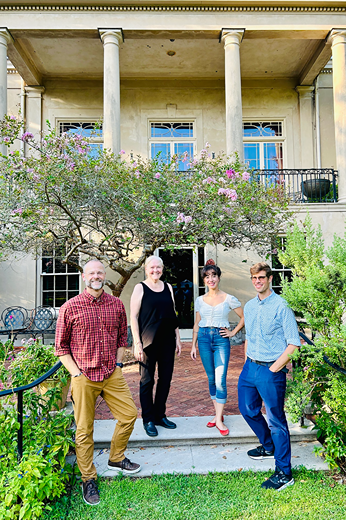
One of the most visible Irish bands around town, Crescent & Clover plays a monthly residency at the Kerry Irish Pub. They've also performed at Markey's Bar, Irish Fest New Orleans, the Abita and Covington Farmer's Markets, and several functions and festivals all along the Gulf Coast. Crescent & Clover is a quartet that consists of Brittany Piatz on cajón and bodhrán, David Connick on guitar and bass, Anne Hibbs on fiddle, and Daniel Vance on mandolin and bouzouki. Piatz has a music education degree and comes from the classical percussion world, so she also plays marimba, vibraphone, timpani, and snare drum. Connick is a rocker who brings in more of the U2 and Aslan vibes. Hibbs integrates folk, as she's a member of the Abita Opry. Vance is in a Scottish group, as well, and is affectionately known by his Crescent and Clover bandmates as the "encyclopedia of music," constantly bringing in new song and artist inspirations. In other bands, he plays tuba and is new to the clawhammer banjo. With this eclectic mix, the four musicians have created arrangements of traditional and contemporary music from across the Celtic nations, as well as several original compositions.
The award for "The Most Irish" Irish band in New Orleans goes to Avoca. Featuring Shannon Kelly on lever harp and fiddle; Pete Dawson on flute, whistle, and vocals; Kendall Rogers on guitar, piano accordion, and piano; Tony Daveron on bouzouki and vocals; and Kevin Muggivan on fiddle and vocals. They focus on traditional Irish music: jigs, reels, polkas, hornpipes, and ballads. Kelly hosts Irish sessions, plays music with members of The Forgotten Revelers, and has a musical family that hails from County Clare in Ireland. Dawson was born and raised in Baton Rouge, where he found his way into Irish music by getting his hands on a flute at an early age. Rogers now resides in Baton Rouge and pivoted to Irish music from the folk world of contra dance. Daveron was born near Dublin and became a touring musician from a young age with Riverdance. Muggivan is also from County Clare and began his musical journey taking lessons with the great Tommy Peoples. They've played the Monroe Irish Fest, Abita Springs Opry, the Celtic Bayou Fest, Festival Internationale's Celtic Bayou Corner, and done pop-ups at Finn McCool's.
C'est Bon
When we talk
about Black American music, there's many genres that instantly come to mind,
including jazz, blues, hip hop, R&B, gospel, and soul, as well as many that
wouldn't have existed without those roots: rock 'n' roll, drum and bass, and
every kind of electronic dance music (EDM).
However, it might be fair to say a genre
that rarely comes to mind for anyone is Zydeco. Yet, when we think of the
"founding fathers" of Zydeco, they are all inventive, creative Creole men:
Amédé Ardoin of Evangeline Parish, born
in 1898, was one of the first accordionists to ever record Cajun music, is
considered to have been a pre-cursor to much of the music that came to follow,
and is even thought of as the "Father of French Music" throughout Louisiana,
whether Cajun or Creole.
Boozoo Chavis, of Lake Charles, wrote
many of what we now consider standards, founded the popular band Majic Sounds,
and performed live from the 1950s and well into the 1990s.
And John Delafose, also from Evangeline,
was the elder of a father/son duo of accordionists who founded the Eunice
Playboys. His son, Geno Delafose, began playing in the Playboys with his father
when he was 8 years old. Both Delafose men have Grammy nominations for being a
part of one of the first bands on record to notably integrate country rock and
blues into the Zydeco genre.
There are so many other beloved POC
heroes of the genre: Lafayette's Stanley "Buckwheat Zydeco" Dural Jr., who
brought Zydeco to the masses, performed on all the late night shows, twice for
President Clinton, and once at the closing ceremonies at the 1996 Summer
Olympics; beloved touring artist Rosie "Bellard" Ledet, from Church Point, of
the Zydeco Playboys; two-time Grammy award-winning Terrance Simien, of St
Landry Parish; Alton Jay "Rockin' Dopsie" Rubin, who performed on Paul Simon's Graceland; the ripped and rockin'
Dwayne Dopsie; and the youngest of the batch, four-time Grammy nominated Cedric
Watson, heralding from Texas but finding his home in Lafayette.
Now let's go back to our "All That Jazz"
signature rule of three and deep dive into three particular artists of note: Clifton Chenier, considered the founder
of Zydeco; Bruce "Sunpie" Barnes,
the most lovable and recognizable New Orleans frontman of the genre; and Corey Ledet, who has recently taken
Zydeco into a surprising, new, and inventive direction.
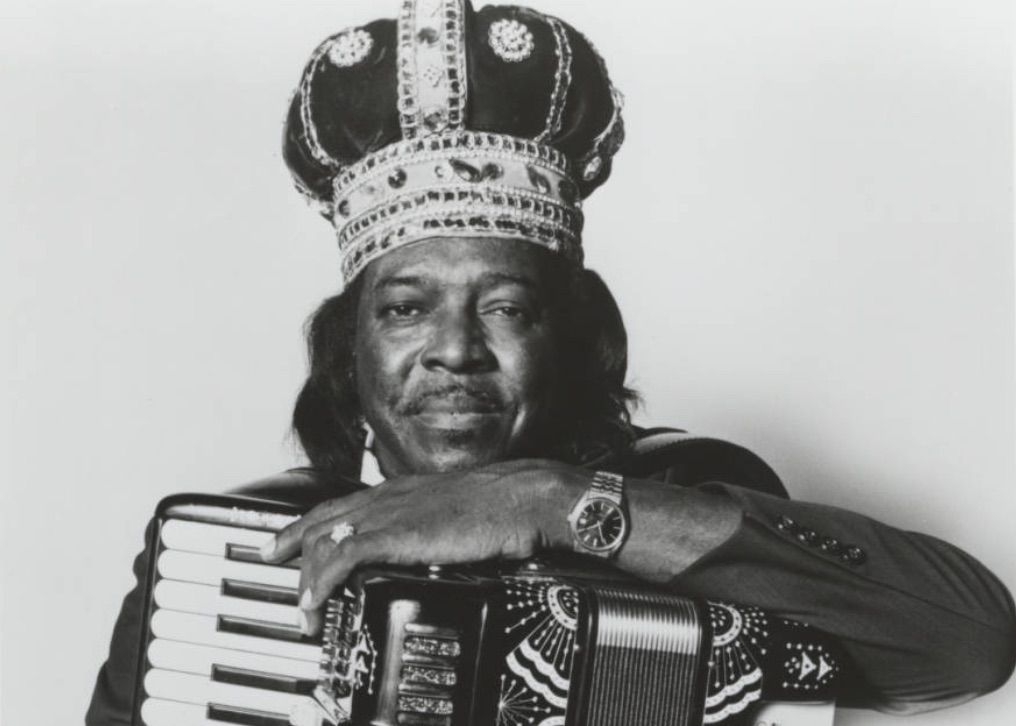
Clifton Chenier
If you only know one name in Zydeco, make
it Clifton Chenier, the "King of Zydeco." Born in 1935 in Leonville, Chenier
was a native Louisiana French speaker. His father played the accordion, his
uncle played the fiddle, and, by age 15, Chenier was performing on the
accordion himself with his brother accompanying on washboard. In 1954, he
recorded the "Cliston Blues," they misspelled his name in the title, and had a
national hit the following year with "Eh, 'tite Fille." Chenier performed for
30 years, with Paul Simon calling him out as the "King of the Bayou" on Graceland and John Cougar Mellencamp
referencing him in his song "Lafayette." In 1983, he finally won a Grammy,
followed by a posthumous induction into the Blues Hall of Fame in 1989, a
Lifetime Achievement Award Grammy in 2014, and the inclusion of his album Bogalusa Boogie in the Library of
Congress in 2016.
Bruce "Sunpie" Barnes
It's rare for anybody to watch Bruce
"Sunpie" Barnes perform without smiling and itching to dance. Frontman of
Sunpie Barnes and the Louisiana Sunspots, Barnes is an extraordinary man.
Formerly a National Park Service Ranger for over 30 years, a pro football
player for the Kansas City Chiefs, a high school teacher, an author,
photographer, Barnes has boundless energy. His shows are an explosion of what
he deems "Afro Louisiana" music: a combination of Zydeco, blues, and Afro-Cuban
music. His son, Aurelien Barnes, of Preservation Hall and the Rumble fame,
often joins him on stage on washboard, continuing the patrilineal tradition.
Both Barnes men also parade in the North Side Skull and Bone Gang, of which
Bruce Barnes is chief. His impression on our city is enormous, and while Zydeco
comes from all over the state of Louisiana, mostly rural towns, the Sunspots
truly feel the shining example of New Orleans Zydeco.
Corey Ledet
Twice Grammy nominated Corey Ledet has
always been an accomplished player. Signed onto Louis Michot's label Nouveau
Electric Records, his bluesy take on Zydeco comes with a twist. Born in
Houston, Ledet's family has deep roots in St. Martin Parish and, for Ledet,
part of connecting to those roots meant learning his Kréyòl mother tongue,
Kouri-Vini. Kouri-Vini is such a rare language—spoken by only 10,000 worldwide,
mostly in Louisiana—that the language itself didn't even have an orthography
until 2016. Last year, Ledet became the first person to release an entire album
in Kouri-Vini, called Médikamen. On
the outside, it's just a great, high-energy, dancey Zydeco album; however, on a
deeper level, it promotes a local culture known to few. Ledet has become an
ambassador with this groundbreaking concept and plays all around the state. If
you get a chance to see this unique sound live, go and dance.
Bang on the Drum All Day
A running joke in bands is that drummers are the "loose" members. It's not rare for a drummer to play in three bands at any given time.
Jazz drummers, especially, who play in multiple musical groups are pretty common. That's because, while there are thousands of songs in the genre, a lot of underlying principles rule them all, so the amount of jazz variations in the world are finite. Part of what we expect from a great jazz drummer is their fluidity and ability to sit in as a "session" musician, regardless of what the set list is. Drummers of other genres are a bit different. There's tens of thousands of "standard" rock songs to memorize, so playing a pop/rock setlist for a wedding or an afternoon cover show can easily require learning two dozen new songs each time. Those are the instrumentalists we're focusing on.
The quality of New Orleans' working musicians is of such a high caliber, and the compensation is so inconsistent, that "gigging musicians" do varied performances all the time, and the best drummer you've ever seen could be playing backup for a karaoke band, sitting in as a ringer with a funk tribute band, or shaking percussion behind a guitar-weilding singer-songwriter.
Jazz-adjacent drummers that were tempting to feature: Alfred Jordan; Thomas Glass; Simon Lott alone performs with Context Killer, Very Cherry, Jumbo Shrimp, Trixie Minx, Betty Shirley, Mike Fulton, Miss Sophie Lee, Amber Rachelle, Good Enough for Good Times, but it was hard to draw the line of which gigs were practically improvised, because they're all such masters of the genre. Benny Divine performs with the rock bands Natural Child, Sick Thoughts, Schizos, Morbid Torment, Fat Savage, Soviet, Doom III, Gary Wrong Group, but he plays multiple instruments, so he isn't drumming in all of them, and indie-rock darling Dreaux Gerard of Painted Hands, Butte, Kelly Duplex, Amelia Neville, Juno Dunes is also a talented singer/songwriter and frontman.
So while each one of those artists deserves recognition for the ridiculous amounts of bands they're in, the three drummers we've chosen for this article—Trenton O'Neal, Ana de Ferreira, and Rob Lovell—are unique because they can play many genres, mainly on drums, have been in dozens of bands, are currently each in more than five, and most of the bands they perform with have original songs, which means that they have either been the writers and original creators of the parts they play or are learning the whole back catalogs of each band, which somehow live in their heads along with the hundreds upon hundreds of standard rock songs that also occupy space. Without further ado, here are three of the hardest working and hardest hitting drummers in New Orleans.
Ana de Ferreira
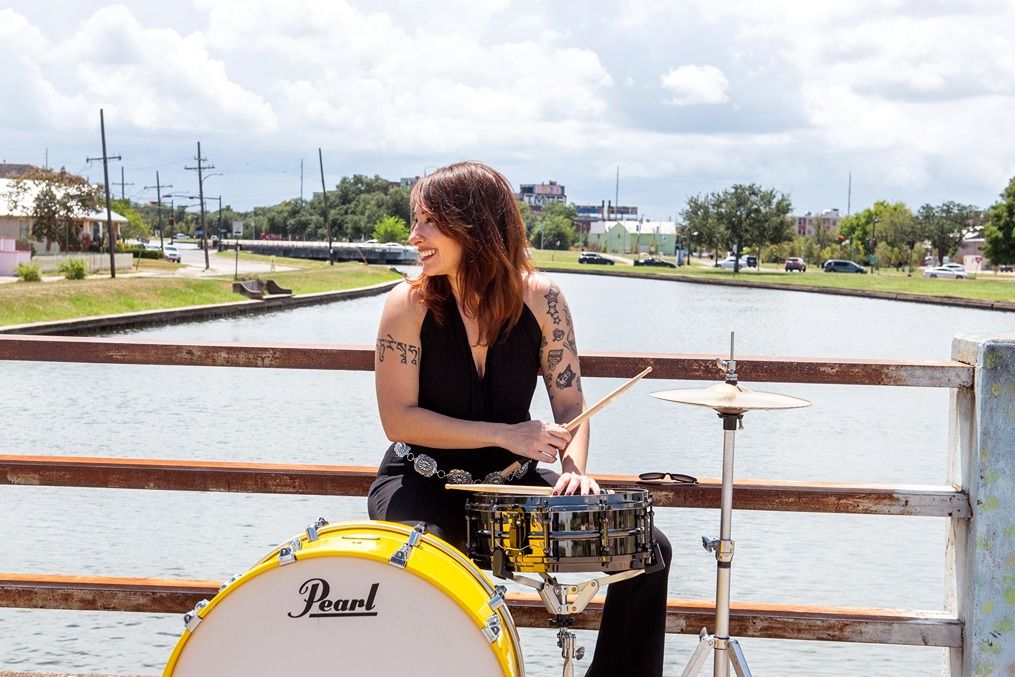
Ever since Ana de Ferreira moved to New Orleans in 2018 from Rio de Janeiro, Brazil, she has been playing on every single stage that needs a drummer, including stages as big as Tipitina's, Maple Leaf Bar, and the Toulouse Theater. She started playing drums as a teenager and, basically, never stopped. In Rio, she recorded with bands Indiscipline and Melyra, who opened for large International touring artists including Arch Enemy. Ferreira plays snare in the marching group Skinz n Bonez and sits in or regularly performs with dozens of bands, usually on a full kit but sometimes on the cajon and percussion. Growing up in Brazil, American music was something she discovered and fell in love with over time, so she's game to play it all. As well as performing in cover bands for rock, country, blues, and all sorts of genres, Ferreira is in four original rock bands: Strange Roux, Jamie Lynn Vessels, High Black River, and WAR BUNNIES.
Rob Lovell

Unless Lovell is sleeping in his home, you can pretty much always find him in the rock scene. Born and raised in Everett, Washington, just north of Seattle, he's been playing bass since he was 16 years old and drums since he was 18 years old. He has been performing for 20+ years in 40+ bands. Lovell has been living in New Orleans since 2011 and, in that 13 year tenure, has played with over a dozen local bands, including Fat Camp, Ossacrux, Glut, Wishful Thinking, Level Head, Torture Garden, Romasa, Witch Burial, GOREgeous, Paprika, Dracula, Big Smile, Wizard Dick, STFAH, and UT/EX—many of which are still on the scene and he is the primary or second call drummer for. Until its recent demise, you could see him collecting tickets at the door of Gasa Gasa. These days, he's often in the back of Siberia, helping out with the Que Pasta Latin Street Food pop up that has now made a more permanent home there, with the addition of a glow-in-the-dark encephalopod mural by Lillian Aguinaga. When not at Siberia or onstage, Lovell is also a recording engineer in Mid-City at High Tower Recording.
Trenton O'Neal
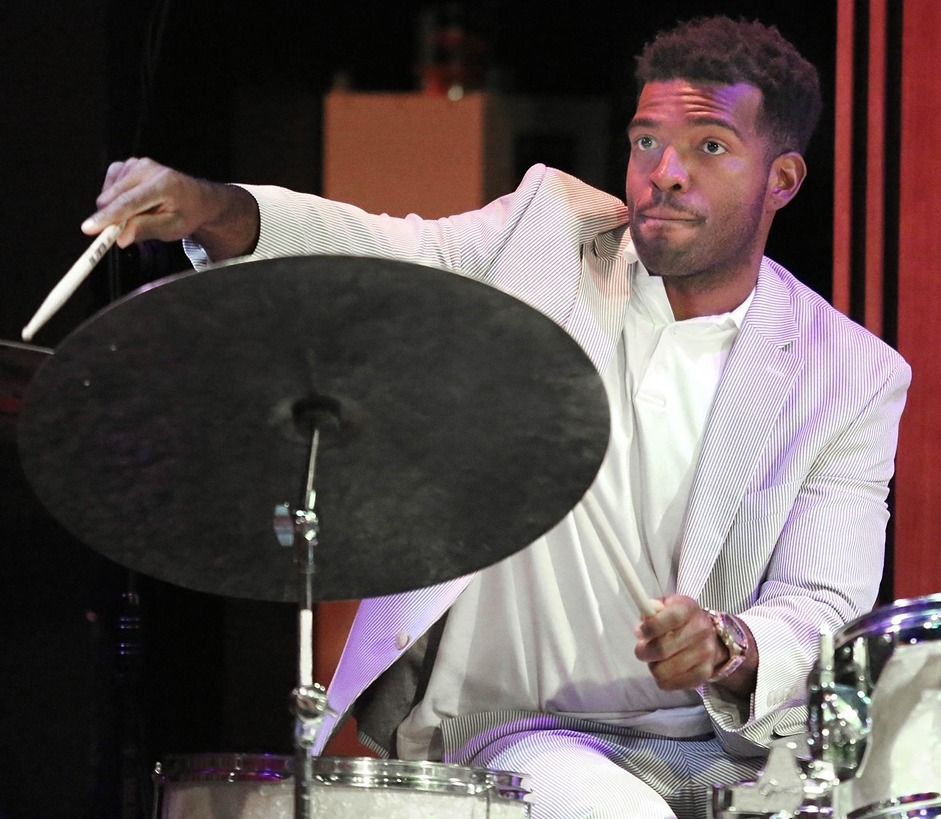
Trenton O'Neal was introduced to music in the Southern Baptist Church, but it didn't take him long to break free into the rhythm-filled streets of New Orleans. He's been marching in parades since elementary school. In college, he played with Loyola University's wind ensemble. He's earned his way all the way up to a Grammy nomination in recent years. O'Neal is the main drummer for the high-energy Mardi Gras Indian fronted funk project The Rumble, featuring Chief Joseph Boudreaux Jr. He also formed experimental side-project Kapow!, travels to Ecuador and all over the United States with funk-rock-blues outfit Deltaphonic, and backs up soul queen Quianna Lynell and famed trombonist Stephen Walker. O'Neal also goes by the artist name The Parayd for a solo project, which is, more accurately, a "collaborations project" with wild promise and features a bunch of New Orleans greats.
Change Through Music
There are few things more noble than using your platform, as an artist, to fight for a cause.
Consider this the beginning of a series, as picking just three artists to represent all of the artists who speak out loudly and proudly about important causes that affect our local community is not possible. We've started with three artists—Derrick Tabb, Big Freedia, and Alynda Segarra—who are inseparable from the movements they champion—music education, LGBTQ+ rights, and immigration reform, respectively.
Alynda Segarra
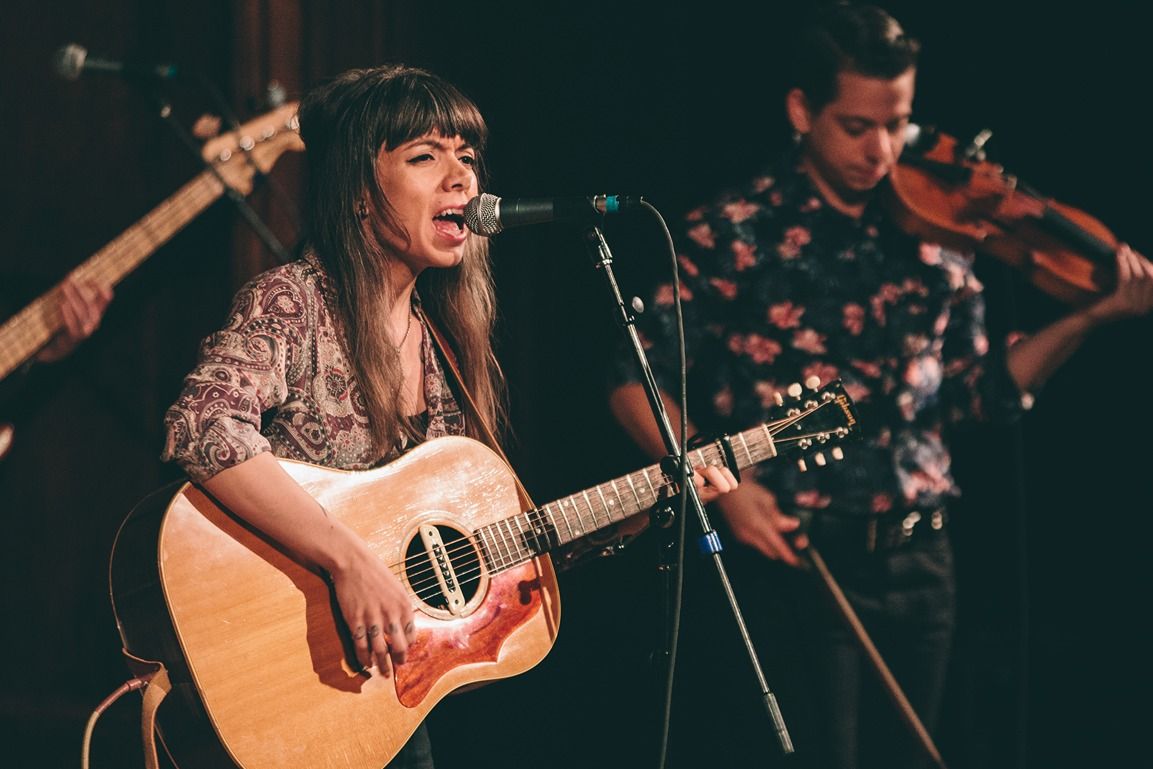
Alynda Mariposa Segarra has been singing about the plight of others (and their own struggles) since they first picked up a guitar. Raised in the Bronx until moving to New Orleans in 2005 and strongly connected to their Puerto Rican roots, every moment holding a mic has provided a moment to speak up for Segarra. On PBS, Segarra explained how even their band name, Hurray for the Riff Raff, was derived from activism, "The people who have gotten me through my life are the weirdos and the poets, the rebellious women, and the activists. They were considered the riff-raff by people in power, and they're the ones that make history."
Where many artists allude to what they care about, Segarra has many songs that are unequivocally about immigration rights, notably, "Rican Beach," "Pa'lante," and "Precious Cargo." The newest one, "Precious Cargo," puts Segarra in the narrative shoes of two young survivors they met through their advocacy work throughout Louisiana. Segarra has spent time at immigration centers, interviewed people who have made the journey and highlighted their real stories, raised funds for the Louisiana Advocates for Immigrants in Detention, and has spoken loudly against anti-immigrant and anti-refugee policies.
They've been quoted on NPR saying, "I'm on stage because I want to fight fascism," and "I felt from a very early age that the personal is political." Already having made a difference, it will be exciting to see the effects of Segarra's voice as they continue to gain popularity and notoriety throughout what seems poised to be a long career.
Big Freedia
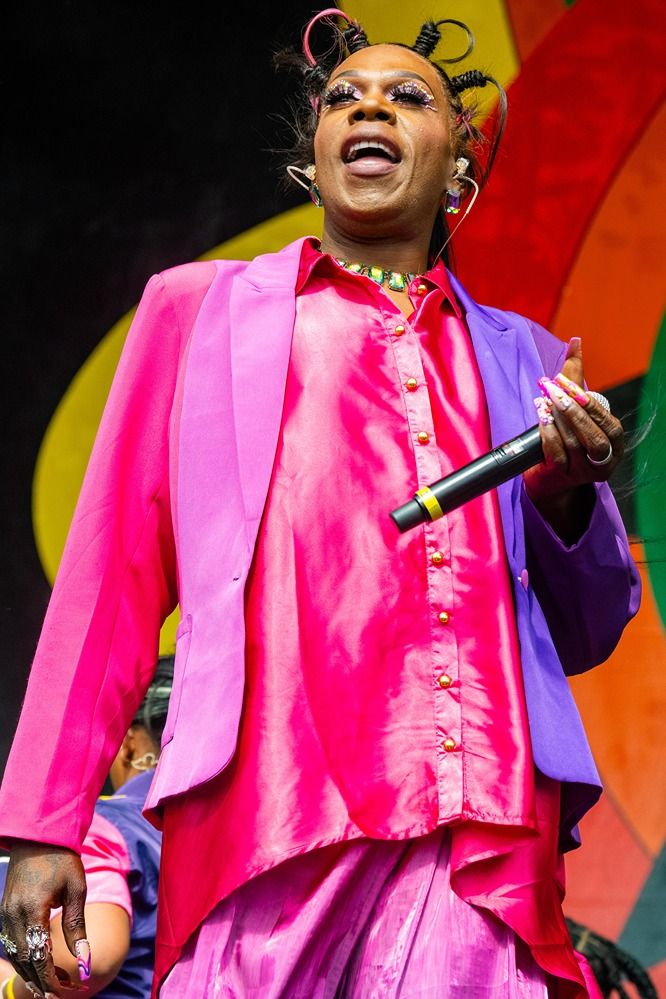
Big Freedia is in no way the only gender-nonconforming New Orleanian artist to be outspoken about LGBTQ+ rights. She's not even the only one in bounce (we see you, Katey Red). However, she is one of the brightest and loudest in our stratosphere because, as she told Billboard Magazine, "People can see my story and know my story and know that through hard work and determination, anything is possible. I'm steady knocking down doors and breaking down barriers."
Born in the '70s and musically active since the '90s, Freedia was already getting recognition back in 2011 for both her music (with Best Emerging Artist and Best Hip-Hop/Rap Artist in OffBeat's Best of the Beat Awards) and her work in the Queer community (nominated for the 22nd GLAAD Media Awards). She's had multiple billboards, TV commercials, reality shows (Big Freedia: Queen of Bounce and Big Freedia Bounces Back), and a successful autobiography, God Save the Queen Diva! She even set a Guinness World Record—for twerking, of course. Freedia has collaborated with so many megastars: Kesha, Lizzo, Boyz II Men, Drake, Lil Wayne, and even Beyoncé.
In 2020, she released a documentary called Freedia Got a Gun, examining the dangers of gun violence in New Orleans, and she has endorsed Democratic candidates for office. While choosing to stick with "she/her" pronouns throughout this article, a big part of what Big Freedia does is allow her fans the freedom to refer to her in "whatever way makes you feel comfortable." She actively and consistently fights the pressure for people to feel forced to gender themselves, while putting out music that makes it impossible not to dance.
Derrick Tabb
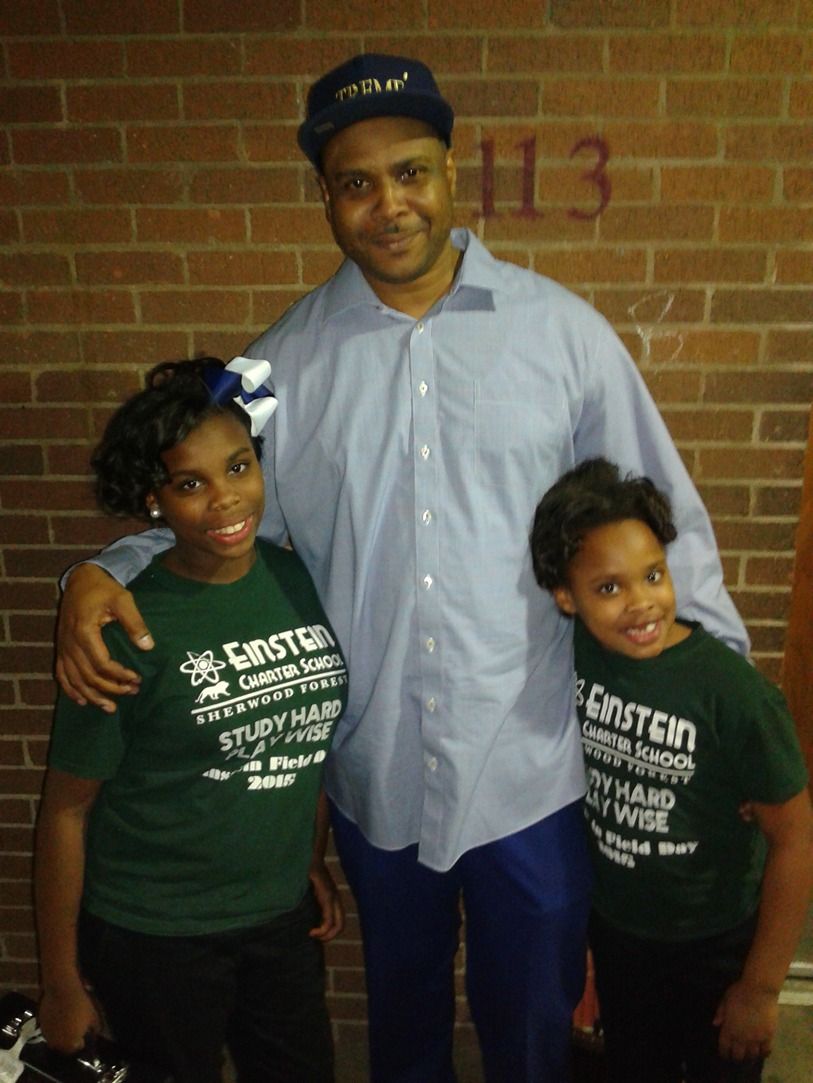
A lifelong musician from Tremé, Derrick Tabb has provided opportunities for thousands of local children in the nearly two decades since he co-founded the Roots of Music. In the '90s, Tabb was one of the founding members of the Hot 8 Brass Band. When he left to join Rebirth Brass Band two years later, he found his tribe. Tabb holds a Grammy from his time in Rebirth, a Top 10 Hero Award from CNN for his efforts with The Roots of Music, and was an essential part of HBO's Treme. Tabb has used his personal success to open as many doors as possible and to hold them open for generations.
The Roots of Music is about so much more than just arts education (which would be valuable enough on its own). Roots employs teachers, tutors, bus drivers, and makes sure children ages 9 to 14 are given a safe space to play, grow, and learn. The students get help with their homework, nutritious meals, pick ups, drop offs. Parents know their children are safe, seen, and supported in the afternoons after school and all summer long. The Roots of Music comes blasting through so many parades with their joyful music. One class of Roots students even got to perform for former President Obama. Roots provides 2,500 hours of music education, 30k+ hot meals, and 1,400 bus journeys, all free of charge to students.
In recent years, the Sprouts of Music has popped up for even younger children, and the Roots Studio Academy has been making a difference in career-building, music theory, and industry certifications, over at Artisound Productions, for youths ages 14 to 18. With an average of 140 students a year in the programs, that is literally 8,000 students who have been affected by Derrick Tabb's consistent commitment to the cause. The Roots of Music is still, in large part, community funded, so if you want to join, you can get involved by donating time, money, expertise, or old instruments.
Three NOLA Trombonists
The trombone has played an essential part in New Orleans music since the 1800s. Trombones have such warmth, deep tones, versatility, and a bit of humor. They're splashy instruments and the people who play them often come with big personalities. They're the reason for the tailgate-style of playing—that slide needs room. What would a second line be without one?
Picking just three players to feature was a brutal process of elimination. Preservation Hall alone is filled with options: respected elder Maynard Chatters, the legendary Freddie Lonzo, Grammy-award winning Craig Klein (also of Bonerama and The New Orleans Nightcrawlers), Finnish artist Katia Toivola, and the infectiously joyful Ronnell Johnson. There's the excitingly experimental Jeremy Phipps of People Museum, the steadfast Corey Peyton and Paul Robertson of The Soul Rebels, the powerful Big Sam (of his self-titled Funky Nation), the ever-touring Emily Frederickson, who got her big break in Hadestown, and Charlie Halloran, who you can catch performing five days a week and see featured on nearly every New Orleans TV show.
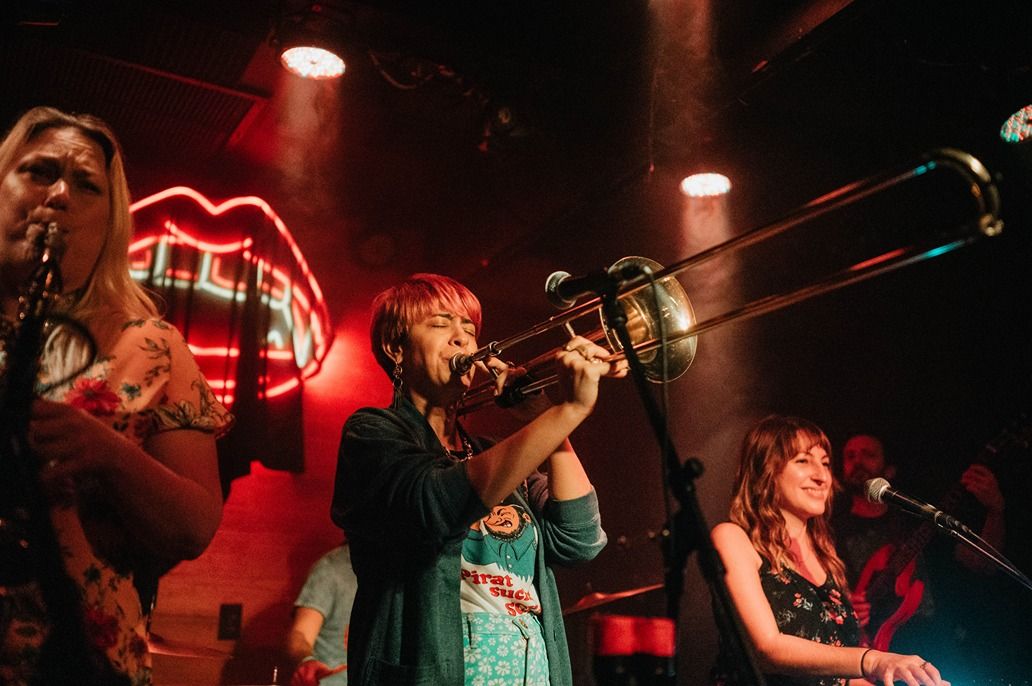
We've decided to feature the ones who have been chosen by artists to represent the sound and spirit of our city on festival posters: Haruka Kikuchi (French Quarter Fest 2024 poster, painted by Monica Rose Kelly), Ashley Shabankareh (Bayou Boogaloo 2024 poster, created by Lillian Aguinaga), and Trombone Shorty (the subject of one of the most recognizable and collectable posters for the New Orleans Jazz & Heritage festival, done in 2012, by Terrance Osborne).
Haruka Kikuchi
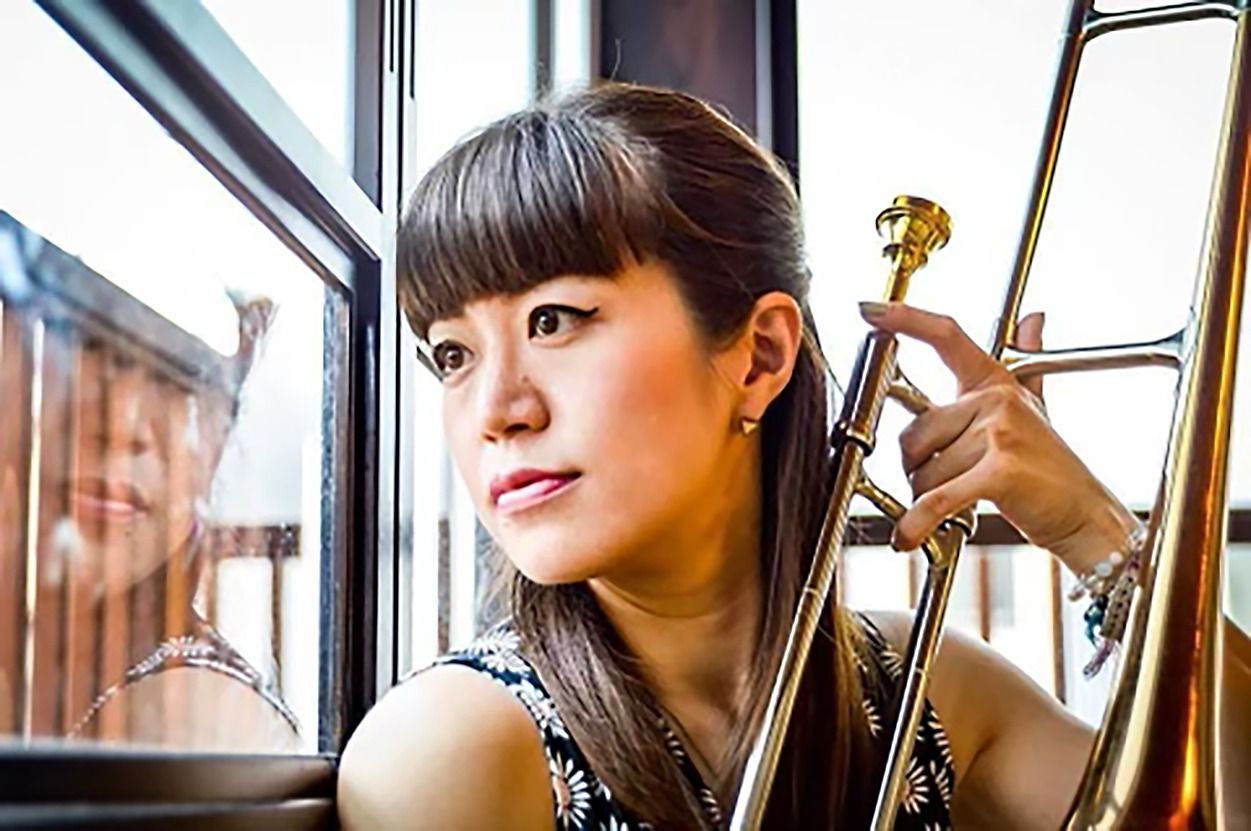
Originally from a town outside of Tokyo, Japan, Haruka Kikuchi moved to New Orleans a decade ago and has made a huge mark on the city. Though she started on piano and violin, by the age of 15, she had gotten her hands on some old Dixieland jazz and excitedly picked up the horn. After many years of playing, performing, and receiving a degree in Music Science, she sought out the source of the music that inspired her. She's now known as the "Queen of Tailgate" because she plays the genre with such reverence and joy.
She has released several albums of traditional music under her own name (Music Granola and Japan: New Orleans Collection Series) and she is a featured artist on so many others. She plays in Shotgun Jazz Band, the Preservation Hall All Stars, the Original Tuxedo Jazz Band, Kermit Ruffins' band, and, a personal favorite, the all-female trad-jazz group Shake'Em Up Jazz Band. An ambassador for our city and our sound, she has spent her time bringing New Orleans flavor all over the world.
Ashley Shabankareh
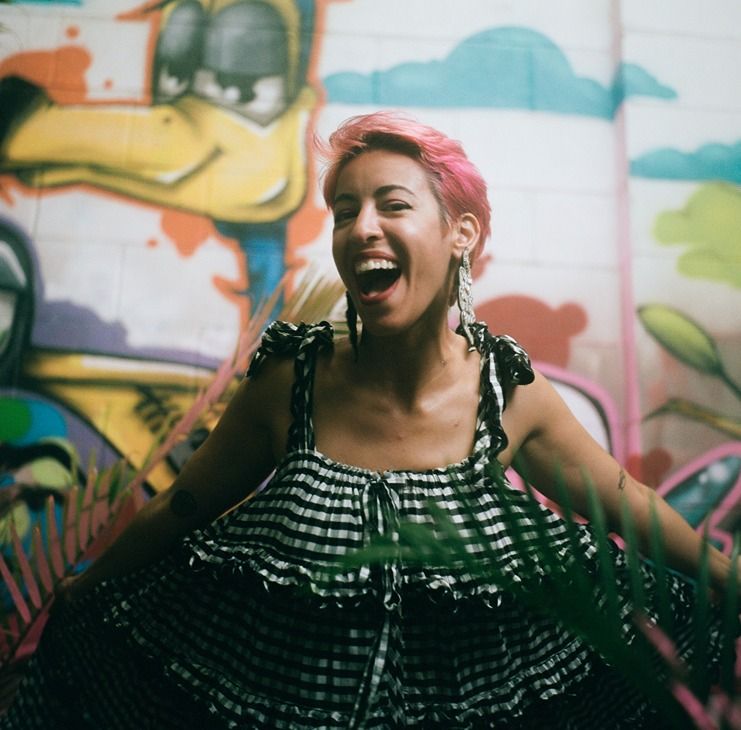
Ashley Shabankareh's musical résumé is as long as a CVS receipt. As a permanent member of Marina Orchestra and Bra's Band brass band, a previous member of the Asylum Chorus, and a guest artist for many local bands, they've played every festival in town. They lead with a love of the trombone. They were the inspiration for artist Lillian Aguinaga's 2024 Bayou Boogaloo festival poster, a festival both of their current bands performed at; however, Shabankareh's contributions to New Orleans extend far past their musical chops.
They're an adjunct professor at Xavier and Loyola universities, a curriculum writer who just released the "Take Me to the River New Orleans" curriculum via Berklee PULSE and the curriculum resource guide "Embracing Arabic Popular Music in the Classroom." Shabankareh is the board president of Folk Alliance International, the board secretary of Second Line Arts Collective, and the chapter governor of the Recording Academy Memphis Chapter several years running. During Carnival, you can catch them dancing with the Camel Toe Lady Steppers. While all of that occurs in Shabankareh's spare time, during the day, they are the director of operations and programs at the Trombone Shorty Foundation, providing opportunities for many future trombonists.
Troy Andrews
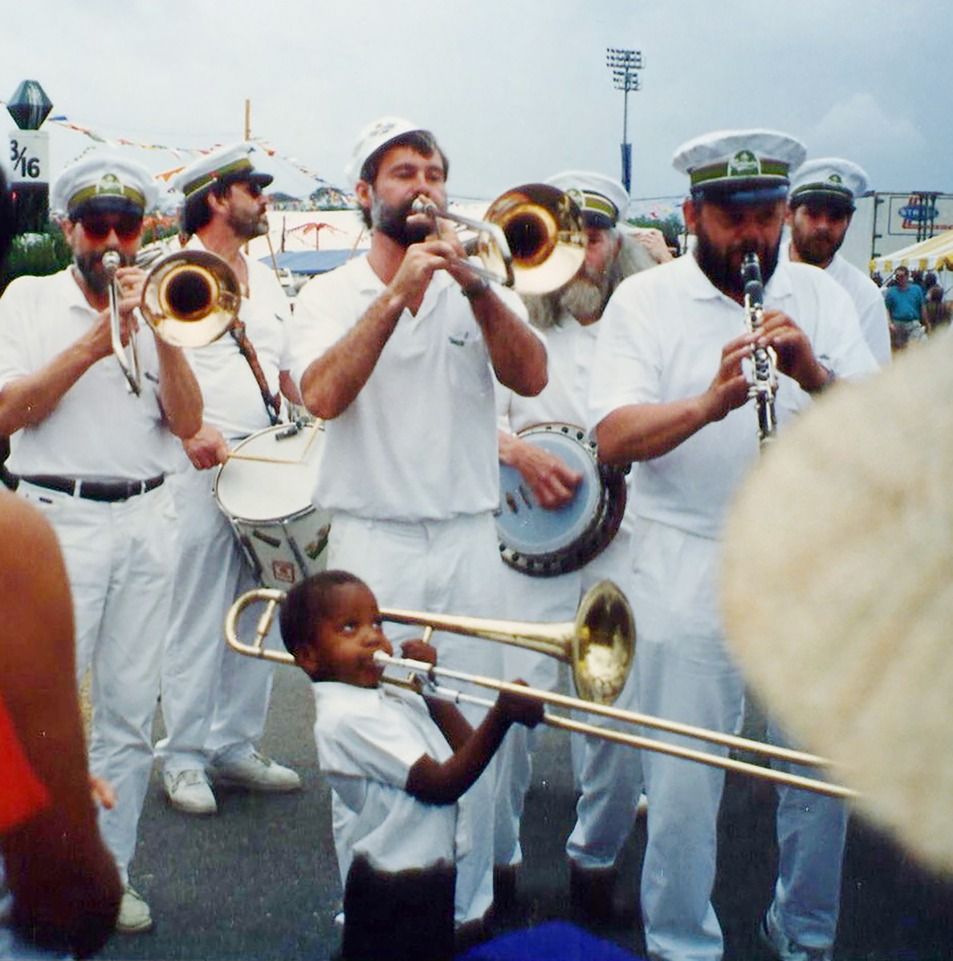
Troy "Trombone Shorty" Andrews is to the trombone what Louis Armstrong is to the trumpet, what Allen Toussaint is to the piano, and what Stanton Moore is to the drums. There is no one more famous, more beloved, and more proudly representative of New Orleans culture. Andrews played his first New Orleans Jazz & Heritage Festival at age 4 and has performed there nearly every year since. A graduate of the New Orleans Center for Creative Arts, he has been in films, TV shows, and documentaries. He's toured with Lenny Kravitz, the Foo Fighters, the Dave Matthews Band, Hall & Oates, and the Red Hot Chili Peppers.
In 2012, the same year he was featured on the official Jazz Fest poster, he performed at the White House, alongside B.B. King and Mick Jagger, for the Obama administration. A few years later, while still in his 20s, he played at the GRAMMYs with Macklemore, Madonna, and Queen Latifah. He's returned to the White House for performances four times since. In the past decade, his career has continued to sky rocket, signing to Blue Note Records, releasing two albums, building his own recording studio, leading a Mardi Gras parade with a float made to look like him, and even getting his own Sesame Street muppet. What Andrews does for his community, though, might have the biggest impact. He has committed to over a decade of the Trombone Shorty Foundation, been an educator and mentor, written multiple children's books, opened doors and made connections, and raised so many funds. Andrews doesn't just bask in his success; he makes sure that what he's built provides a platform and opportunities for generations of talented young musicians to come.

